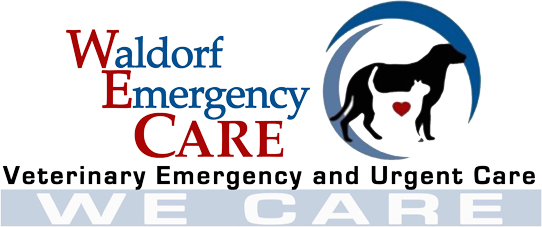Pet Heat Stroke
Pet heat stroke is a dangerous condition that affects many pets every year. At Waldorf Emergency Care, we often treat pets affected by heat stroke. This is particularly true in the summer, when pets are at risk for problems like heat illness. Knowing the signs of heat stroke, what causes heat stroke and how you can protect your pet from heat stroke can help you take care of your pet in summer. In the summer months, taking care of your dog or cat becomes a bit more challenging when the temperature rises. There is a possibility of heatstroke or dehydration when warm weather is present. Make sure you are aware of the need for emergency pet care in case your pet displays any symptoms of heatstroke. Waldorf Emergency Care has several veterinarians that provide urgent care for pets in the Waldorf area. We have gathered some of the signs of a problem, how to avoid a problem, and what our veterinarians can do when we treat a pet for heatstroke or dehydration.
Heat Stroke & Dehydration
In the summer months, taking care of your dog or cat becomes a bit more challenging when the temperature rises. There is a possibility of heatstroke or dehydration when warm weather is present. Make sure you are aware of the need for emergency pet care in case your pet displays any symptoms of heatstroke. Waldorf Emergency Care has several veterinarians that provide urgent care for pets in the Waldorf area. We have gathered some of the signs of a problem, how to avoid a problem, and what our veterinarians can do when we treat a pet for heatstroke or dehydration.
Symptoms of Pet Heat Stroke
A pet with heatstroke will likely pant constantly in an attempt to cool the body down. This works in some instances for dogs, but will not work for cats. If you do not provide your pet with water and it continues to pant, it will likely suffer from dizziness, lethargy, and unresponsiveness. At the first signs of a problem, it is best to get your pet to a shaded area where water is available for drinking.
Heat stroke can affect different pets in different ways, but some of the most common symptoms of heat stroke include:
- Dehydration
- Thick saliva
- Rapid breathing or panting
- Excessive drooling
- Reddened gums
- High temperature
- Rapid heart rate
What Causes Heat Stroke
Heat stroke is caused by intense heat and dehydration in the summer. Different circumstances can cause heat stroke in pets, including:
- Lack of shade for outdoor pets.
- Exercising during the hottest point of the day.
- Spending time in a parked car on a warm day.
- Spending time on hot pavement.
Some pets are more at risk for heat stroke than others. For example, older pets and very young pets may not handle heat as well as middle-aged pets. Pets that are ill, pets that have a chronic conditions and pets that are not used to spending time outdoors are all at higher risk for heat stroke. In addition, pets with flat faces and short noses are at higher risk for heat stroke.
Heat Stroke Prevention
There are many things you can do to prevent your pet from experiencing heat stroke. For example:
- Provide your pet with shelter from the sun. Outdoor pets–even pets that are used to the heat–need shelter throughout the day. Give your pet a permanent shelter that provides shade.
- Bring in outdoor pets on days that are excessively hot. Prepare a cool place in your garage or basement where your pet can spend time when it’s dangerously hot outside.
- Exercise your pet at cool times of the day. Your pet should still get exercise even when it’s very warm. Get up early to exercise your pet before it becomes hot outside, or exercise your pet after sunset.
- Get your pet’s hair cut in the early summer. Thick, long coats can trap in heat. Get your pet’s hair cut very short in summer to prevent your pet from overheating.
It is wise to be aware of the weather conditions in your area, so you can make arrangements as needed. If the weather is expected to be exceptionally hot or humid, avoid bringing your pet outdoors until the risk of heatstroke has been reduced. Provide your pet with a constant source of water, so it can drink some whenever it is feeling hot. Do not encourage your pet to exercise when the weather is not ideal. Do not leave your pet inside a vehicle for any length of time if the temperature is high or even moderate.
If you suspect your dog or cat is suffering from heatstroke, contact our veterinarians to make an emergency appointment. We are experienced with handling dehydration cases and will use our emergency training to provide urgent care to address your pet’s heatstroke quickly and effectively. This includes hydrating your pet, using cooling apparatuses while monitoring the pet’s temperature, and giving medication if needed.
Our veterinarians will also provide a few recommendations on how to care for your pet if the temperature is high, so you can prevent heatstroke in the future. We are available for trauma incidents in addition to wellness-care visits to keep your pet in the best of health.
Get Urgent Pet Care in Waldorf, MD
If you suspect your pet is suffering from heatstroke or dehydration, contact Waldorf Emergency Care to alert our veterinarians so we can prepare to provide emergency care for your pet. Call our office today at (301) 705-9700 to find out more about our veterinary services.
